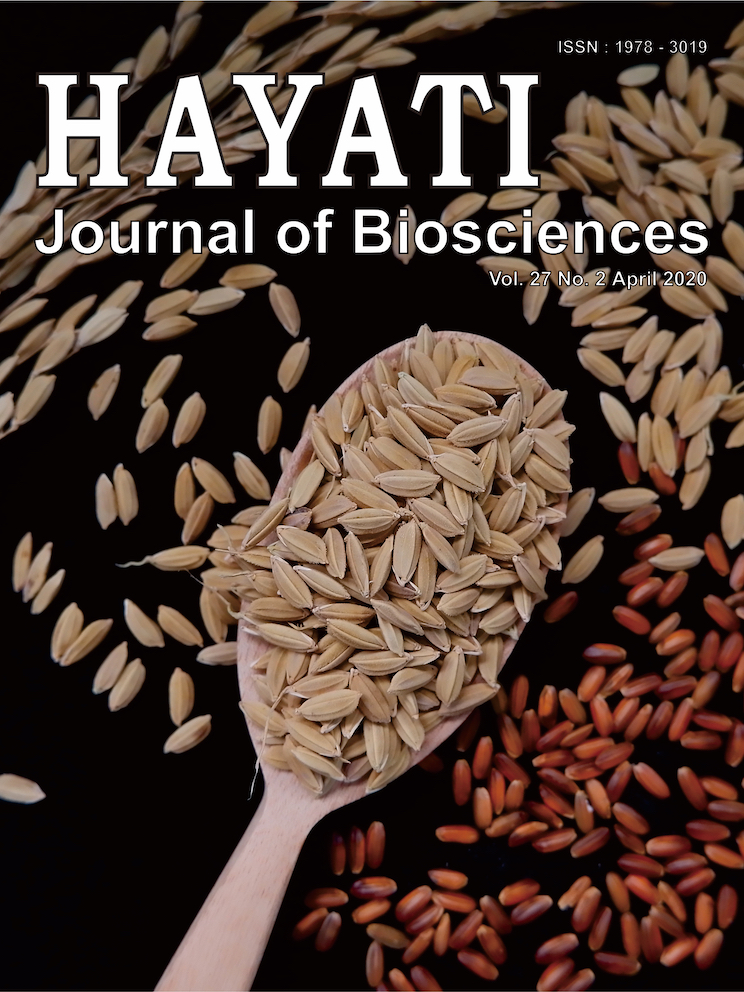Maggot Meal (Hermetia illucens) Substitution on Fish Meal as Source of Animal Protein to Growth, Feed Utilization Efficiency, and Survival Rate of Milkfish (Chanos chanos)
Abstract
High protein content in maggot is one of the advantages for increasing fish growth through artificial feed. This study aimed to find the best optimization and feed formulation for fish meal substitution with maggot meal on growth, feed utilization efficiency, and survival rate of milkfish (C. chanos). Milkfish (C. chanos) with an average weight of 0.62±0.01 gram/fish was used as test fish. Feeding is carried out at 07.00 a.m., 12.00 p.m., and 17:00 p.m. through fixed feeding rate method. The tested fish was kept for 42 days with a stocking density of 1 fish/l. The experimental design used was a completely randomized design with five treatments and three replications. The treatments which had been done were fish meal substitution with maggot meal as follows: A (0%), B (25%), C (50%), D (75%), and E (100%). The research parameters included total feed consumption (TFC), feed utilization efficiency (FUE), protein efficiency ratio (PER), relative growth rate (RGR), survival rate (SR), and water quality. The results showed that the fish meal substitution with maggot meal had a significant effect (p<0.05) on FUE, PER, RGR and had no significant effect (p>0.05) on TFC and SR. The best treatment of each treatment is in treatment C with a composition of 50% maggot meal substitution on fish meal which resulted in a TFC value of 40.17±4.58, FUE of 27.51±0.77, PER of 0.83±0.03%, and RGR of 2.34±0.10.
Downloads
HAYATI J Biosci is an open access journal and the article's license is CC-BY-NC. This license lets others distribute, remix, tweak, and build upon author's work, as long as they credit the original creation. Authors retain copyright and grant the journal/publisher non exclusive publishing rights with the work simultaneously licensed under a https://creativecommons.org/


















.png) IPB University
IPB University Department of Biology
Department of Biology The Indonesian Biological Society
The Indonesian Biological Society 

